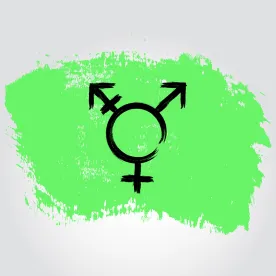The rights of transgender individuals have become a more prominent civil rights issue in recent years, and employers should be aware of how laws in this area impact their employment policies and treatment of transgender employees.
In October, the California legislature made it unlawful for long-term care facilities or their staff to “willfully and repeatedly” fail to use a transgender person’s preferred name or pronouns after being clearly informed of those preferences. California is not the only state with laws specifically addressing pronoun use for transgender individuals. The New York City Human Rights Law requires employers and covered entities to use an individual’s preferred name, pronoun, and title regardless of the individual’s sex assigned at birth. The U.S. Equal Employment Opportunity Commission (EEOC) has also addressed pronoun use with respect to transgender individuals in the workplace. In 2013, the EEOC held in Jameson v. U.S. Postal Service, EEOC Appeal No. 0120130992, 2013 WL 2368729 (May 21, 2013) that repeated, intentional misuse of a transgender employee’s new name and gender pronoun may constitute sex-based discrimination or harassment. It noted that “supervisors and coworkers should use the name and pronoun of the gender that the employee identifies with in employee records and in communications with and about the employee.” In its decision, the EEOC cited guidance from the Office of Personnel Management, which encourages federal employers to use pronouns appropriate to an employee’s expressed gender identity.
However, not all of the momentum is in favor of recognizing transgender employee rights. The day after California’s pronoun law was enacted, U.S. Attorney General Jeff Sessions declared that Title VII of the Civil Rights Act of 1964 does not protect against employment discrimination on the basis of gender identity. This marked a reversal of the Department of Justice’s previous position, and conflicts with several federal courts and the EEOC, which have held that Title VII’s prohibition of sex discrimination encompasses discrimination based on gender identity, as well as sexual orientation. Further complicating matters in this evolving landscape of transgender rights, states offer varying levels of protection for transgender employees. Many states do not have employment-specific laws protecting against discrimination based on gender identity, while others do. And some municipalities have greater protections for transgender individuals than the states in which they are located.
Against this backdrop, employers must be cognizant of the laws that implicate treatment of transgender individuals in the states and cities where they operate and have employees. Correct pronoun usage is just one of many issues that are implicated by protections against gender identity discrimination and harassment in the workplace. Employers should also evaluate employee handbooks and policies with gender identity protections in mind, including the following areas:
-
Use of employee pronouns and names and related recordkeeping
-
Bathroom and locker room access and signage requirements
-
Dress code, appearance, and makeup policies
-
Privacy policies for confidential medical information, including transgender status
-
Anti-discrimination and anti-harassment policies
-
Guidelines for treatment of transgender employees and specific rules governing employees undergoing gender transition
McDermott Will & Emery associate Natalie Colvin also contributed to this article.



 />i
/>i

